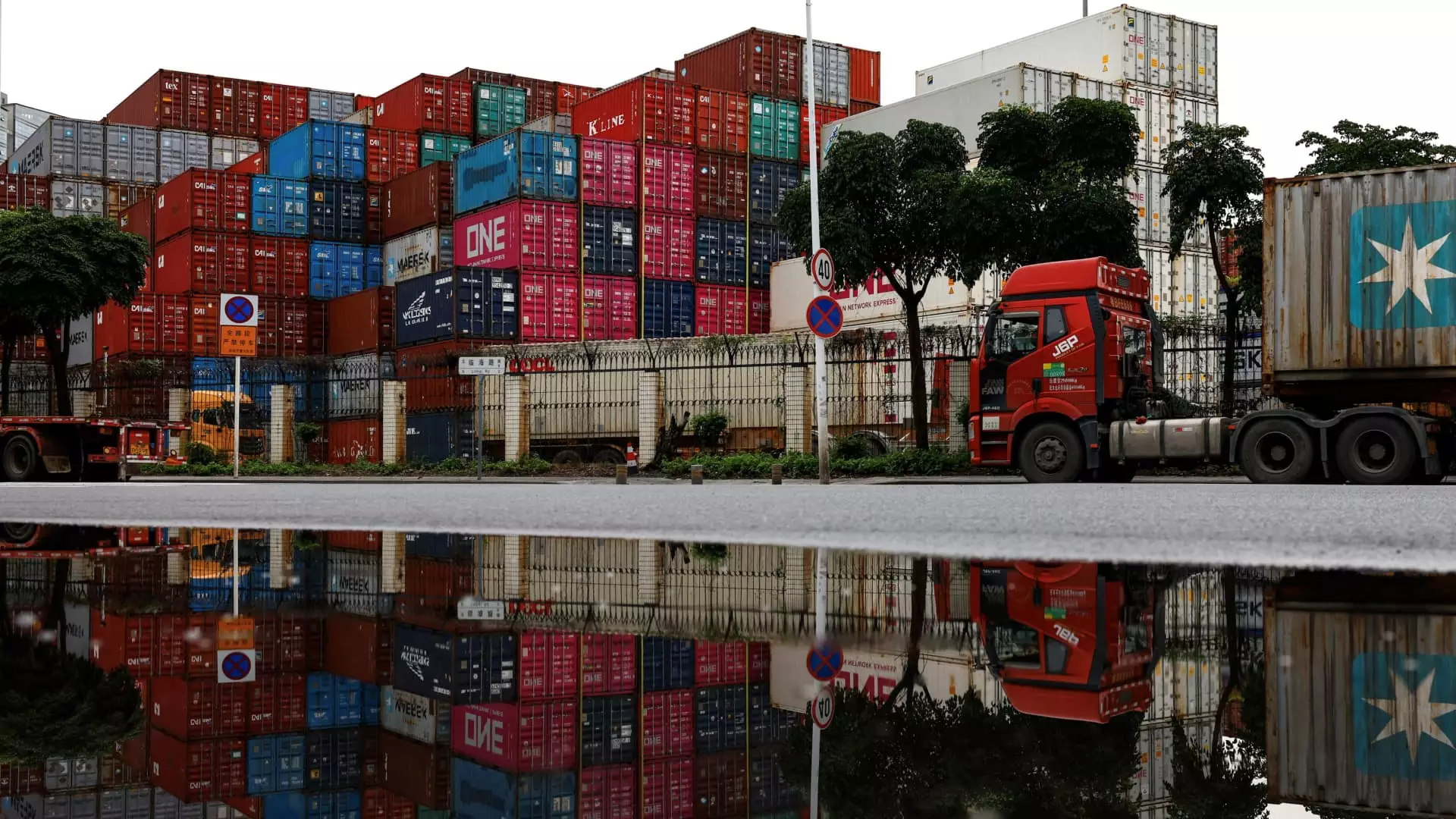For years, China has been the engine driving global manufacturing, but recent signals paint a troubling picture beneath the surface. The latest official data reveals that China’s manufacturing sector contracted again in July, falling below critical expectations and challenging the narrative of a steady recovery. The Manufacturing Purchasing Managers’ Index (PMI) at 49.3 suggests a decline rather than growth, highlighting fundamental issues that threaten to destabilize both China’s economy and the interconnected global supply chain.
Despite this contraction, Beijing appears reluctant to acknowledge the severity of its economic malaise. Official statements downplay the decline, citing weather disruptions and shifting orders abroad. Yet, beneath this benign explanation lies a complex reality: the inward struggles of overcapacity, rising trade tensions, and shifting geopolitical winds are forcing manufacturers to adapt or perish. It is an unmistakable sign that China’s economic resilience, long regarded as a given, is finally faltering under the weight of external pressures and internal imbalances.
What is particularly alarming is the similarity of current conditions to past downturns—yet this time, the root causes are more intertwined with geopolitics than ever before. As tariffs escalate and trade war rhetoric intensifies, China’s manufacturing footprint is no longer simply a matter of domestic policy but a battleground for global influence. The shift of large orders to lower-tariff countries like Vietnam is not coincidence but a strategic response to deteriorating relations with the U.S. and an attempt to preserve export viability, even if it means sacrificing some of the domestic industrial backbone.
Trade Tensions: The Ticking Time Bomb
The trade war between China and the United States is more than a political spectacle; it is directly addressing the fabric of China’s economic stability. Recent negotiations in Stockholm ended without extension, and the expiration of tariffs set to roughly equal 43% signals impending uncertainty. Meanwhile, the U.S. is actively encouraging diversification through deals with Vietnam, imposing steep tariffs on goods transferred or manufactured outside mainland China.
This context underscores the fragility of China’s export-dependent growth model. The 5.8% year-on-year rise in June exports might seem encouraging, but it masks underlying vulnerabilities. The increase largely stems from a temporary rebound, and once tariff pressures intensify or persist, what remains of China’s export capacity could rapidly diminish. The government’s strategy to shift production externally and reduce reliance on traditional markets risks eroding the core competitive advantages that fueled China’s meteoric economic rise over recent decades.
Furthermore, the impact on employment and raw material inventories signals an economy that is pulling back and retreating from aggressive expansion. The employment index, barely above contraction territory at 48, combined with falling new orders, indicates declining business confidence—a dangerous prelude for future growth. While weather disruptions and domestic anti-inflation measures contribute to these declines, the overarching challenge remains: how does China sustain growth amid rising external barriers?
Internal Struggles and External Pressures Collide
China’s economic struggles are compounded by domestic issues often overlooked in international narratives. The country’s efforts to address overcapacity and excess industry—aimed at stabilizing the market—appear to be producing unintended consequences. Goldman Sachs analysts have pointed out that measures targeting overproduction are suppressing output and decreasing inventories, which further feeds into a slowdown in manufacturing activity.
Adding to the complexity is the environmental toll of recent extreme weather events, which have disrupted supply chains, damaged infrastructure, and claimed lives. These natural calamities, whether heatwaves or torrential rains, intensify the operational hurdles faced by Chinese manufacturers. Yet, blaming weather solely obscures the greater structural ailments—questionable real estate policies, rising debt levels, and a cautious central government insistent on controlling overheating sectors.
Simultaneously, Beijing’s limited appetite for bold stimulus measures signals a cautious, if not hesitant, approach to reviving growth. The Politburo’s recent meeting emphasized risks tied to local government debt and property sector overheating, rather than signaling any strong economic stimulus. This pragmatic stance, while understandable, risks leaving the economy vulnerable to stagnation and further contraction.
From a global perspective, this is not just a Chinese issue; it reverberates across the entire supply chain. Countries dependent on Chinese exports are quietly preparing for lower demand, and multinational corporations are re-evaluating their manufacturing footprints. The more China resists aggressive stimulation, the more economic diversification and supply chain localization will accelerate—potentially fragmenting a once-unified global manufacturing hub.
A Center-Left Perspective: The Need for Balanced Engagement
From a liberal-centrist standpoint, the current economic trajectory underscores the importance of nuanced, strategic engagement with China. It is undeniable that the country’s economic slowdown presents risks to the global economy, but rash confrontations or overly simplistic trade decouplings ignore the deep interdependencies that define the modern world. Instead, a balanced approach that combines engagement, careful regulation, and diplomacy is vital.
Reckless policies—either full-on tariffs or passive neglect—fail to address the root causes and only deepen the economic fissures. Western nations should continue fostering dialogue and multilateral cooperation, encouraging China to adopt sustainable reforms, especially in environmental and labor standards, to stabilize its economy without risking a full-blown collision. Moreover, supporting diversification of global supply chains and promoting fair trade practices serve as prudent strategies that benefit both parties by reducing vulnerabilities.
It is crucial that policymakers recognize this moment as an inflection point—not merely a crisis but an opportunity. China’s economic slowdown, if managed wisely, could be a catalyst for reform and transition toward a more balanced, sustainable growth model. However, this requires patience, strategic diplomacy, and a recognition that today’s challenges demand cooperation over confrontation.
By acknowledging the pressing issues China’s manufacturing sector faces—rather than dismissing them as weather-related or temporary—international actors can better collaborate to mitigate disruptions. The path forward should blend pragmatism with ambition, emphasizing mutual benefit rather than unilateral dominance. Only then can dangers be transformed into opportunities for a more resilient and equitable global economy.

